| Mental, Religious and Social Forces in the Netherlands | |||||||||||||||||||||||||||||||||||||||||||||||||||||||||||||||||||||||||||||||||||||
A General View of the Netherlands, Number XVIIby the Rev. Herman Bavinck, D.D., Professor Free University, Amsterdam, Member for South Holland of the First Chamber of the States-General, &c.The Series of pamphlets giving together a general view of the Netherlands has been published for the P.P.I.E. 1915 under direction of the Commercial Department of the Netherlands Ministry of Agriculture, Inductry and Commerce at The Hague 1915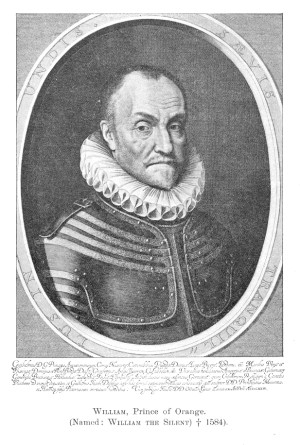 3 As in other countries, so also in the Netherlands did the Reformation destroy the unity of Church and Confession, of views on the world and life. The new ideas found here a long prepared and fuitful soil. The influence of Calvin made itself felt after the “Evangelicals" (about 1518-1531), and later the Baptists (about 1531-1560), had first formed a nucleus of Reformers, and this influence was of importance because it led to a turning-point in history. Indeed, in State as well as in Church Calvinism was not content with mere passive resignation and defenceless martyrdom, but proceeded to organization and action (alliance of Consistories, alliance of Nobles, creeds, rituals, synods and field-preaching). The eighty years' war began with the battle of Heiligerlee on the 23rd. of May, 1568; and at the beginning at any rate it was a religious war, a struggle for religion according to the Reformed Confession. In consequence Calvinism created here, more than anywhere else, a peculiar people and State. The Reformed Confession was the people's religion, permeating their entire life, and remained, during a century at least, the great motive power in State and society. This of course brought State and Church into close touch with each other. They were both born, as it were, on the same day, and for centuries remained united. The Reformed Church was the heart of the Republic, and the Republic was born out of the struggle for the Faith. The Reformed religion was acknowledged as early as in 1583 in all the Northern districts of the Netherlands as the only lawful one, on condition, 4 however, that each individual was entitled to his personal belief. Yet not until the Great Convention of 1651 was this right officially confirmed. But this does not at all mean that all the people of the Netherlands joined the Reformation. On the contrary, according to a rough estimate, in 1587 only one-tenth of the population was Reformed, and this tenth belonged mainly to the common people. Even during four years, from April 1572, to Nov. 1576, the war against Spain was carried on by one-tenth of the population in the Provinces of Holland and Zeeland. But this inconsiderable portion of the people was strong through its faith; it knew what it wanted, it wanted what conscience imposed, and grew under persecution. However, besides this small group of Reformed believers, the Republic from the first numbered many citizens who cherished entirely different convictions. In the first place, there were many who remained loyal to the Roman Catholic Church, and began to organize themselves anew, especially in the 17th century, under the leadership of Sisbout Vermeer, apostolic Vicar of Cologne. Moreover, there were liberals, who concerned themselves little about religion, and indulgents, who could not adjust themselves to the rigid Reformed faith. During the 16th century a few Lutheran congregations were organized — as at Woerden — at first independent of each other, but in 1614 forming a union. Further, there were Baptists, who after the catastrophe of Munster sought strength in quietness, and, gathered together out of the dispersion by Menno Simons (1492-1559), later gained great prosperity. Towards the end of the 16th century and during the 17th century, Jews from Portugal and Germany were added, who sought refuge particularly in Amsterdam, and there formed two widely-differing communities. And in the 17th and 18th centuries the number of dissenters was considerably increased by the Brownists, the Remonstrants, the Labadists, the “Rynsburgsche Collegianten", the Hernhutters, &c. As in other countries, particularly in England, so the 5 differentiation in the realm of religion and Church made constant progress in the Netherlands. Compared with other countries all these dissenters enjoyed a great measure of freedom in the Republic. True, they lacked the full right of citizenship, were not eligible for public offices, and were not permitted to hold public religious services. Strong edicts were issued, especially against the Roman Catholics. The times were not yet ripe for a religious liberty such as William, Prince of Orange, desired. Nevertheless, freedom of conscience was guaranteed to all. There was no question of inquisition. The edicts were but rarely rigidly enforced; services were often held in private houses with the connivance of the authorities. When we compare the condition of the dissenters in our Fatherland with that of other countries at that time, it may be called quite bearable. The Netherlands was known as the land of liberty. The persecuted and oppressed found a refuge amongst us, and the Press was freer here than in any other country. The motives for this tolerance were not always of the most estimable kind; political, commercial, and financial interests played a large part in this matter. But still it existed and grew with the changing of the times. Although legally everything remained as of old, yet a different spirit was gradually awakened. Reason began to emancipate itself from faith. Natural science, jurisprudence, philosophy, developed themselves into independence. New conceptions drove theological differences into the background. The differentiation of meanings in creeds and churches produced a longing for their underlying unity and fellowship. The era of tolerance synchronised with this mental process, which ran from 1740 to 1770, and in its turn prepared the way for the deistic and neologic ideas, which forced their way into this country from England, Germany and France, and were hailed with enthusiasm. These principles were transformed into acts through the Revolution of 1795. But on account of the disappointment they brought with them, they were qualified, modified, and protected against their own consequences and excesses. 6 Thus at the beginning of the 19th century a world view came to obtain which sought its strength in avoiding extremes on either the right or the left. One considered one's self on the one hand, far above the positive creed that had been the strength of the Reformation in the 16th century, and on the other was not satisfied at all with the French and German neology, that denied all special revelation and sometimes considered even Christianity as a thing of the past. The new idealistic philosophy could not find favour here either. Criticism was acceptable only to a few independent men such as C. van Hemert (1756-1825) and J. Kinker (1764-1845), and Schleiermacher remained entirely unknown for many years. People lived on complacently in the Eclectic Common-sense Philosophy of van de Wynpersse, Perponcher, and van Hamelsveld, as they also found literary enjoyment in the sentimental poetry of Rhynvis Feith (1754-1824), and the cultured, passionless prose of van der Palm (1763-1841). The Netherlands' peculiarity and strength lay, it was thought, in a moderate type of enlightened theology, which, whilst not rationalistic, yet wished to remain rational. It built a light supernatural structure on a rational foundation, and among others was represented in a pre-eminent manner by such men as Clarisse, Kist, Muntinghe, van Hengel, Heringa, Royaards, and Vinke. I. But this unanimity did not last long. Sweet tranquillity soon made way for difference and strife in the realm of Religion, Church and State. With the release from the French yoke, the return of the House of Orange, and the restoration of independence, there arose a national, religious, and confessional consciousness. A Revival, called Reveil, took place in the Catholic as well as in the Protestant churches of this country. The 19th century has to a large extent been one of differentiation, a reaction from the attempt to mould every one after the same model. Three things deserve attention in this regard: 7 1. On the 4th of March, 1795, liberty, equality, and brotherhood were proclaimed, and on the 5th of Aug., 1796, the principles of the State Church were declared abolished. In the first Constitution of 1795 art. 19 provided that each citizen should be free to worship according to the dictates of his own conscience; in this regard the community was to provide security and protection for all. Art. 20 added that there were to be no civic privileges or disabilities connected with any confession; and art. 21 that each Church was to provide for the support of its own worship, ministers and institutions. Additional articles provided that salaries and childgrants 1 were to be continued for 3 years; pensions for life; and that the church endownments (that is, the funds for the salaries of the ministers of the Netherlands Reformed Church) should be declared national, on behalf of national education and provision for the poor. But these regulations soon proved too radical, and therefore were mitigated considerably in the next Constitution. Freedom of worship and separation of Church and State were, it is true, maintained in theory; but much of the old gradually returned: the compulsory observance of the Sabbath, the public Day of Prayer, the recognition of the theological faculty at the State Universities as training school for the ministers of the Netherlands Reformed Church, &c. In 1805 a Secretary of State was charged with the care of Church policy; in 1808 a separate Ministry of Worship was organized; and on the 16th of Sept., 1815, by Royal Decree two departments for the administration of affairs of worship were organized, which lasted until the 1st of Jan., 1871. Nor were the rules as to the payment of salaries carried out. The Constitution of 1801, as also that of 1803, declared that each denomination should remain in possession of what it owned at the beginning of the century. 8 By resolution of Aug. 2nd, 1808, King Louis Napoleon confiscated church properties, and payment of salaries to preachers of the former privileged Church guaranteed out of the Treasury. This last rule was even so far extended that clergymen of other denominations should also be paid out of the Treasury, if there were sufficient funds. The Constitution of 1815 stipulated subsequently that payment of salaries, pensions, and other incomes of whatever nature, at that time enjoyed by the various denominations or their clergy, should remain guaranteed; and further, that ministers who up to this time had not received any or insufficient salaries out of the Treasury should receive compensations or increased salaries (art. 194). This article was retained without modification in the following Constitutions up to the present day. The financial bond between Church and State continues notwithstanding the Secession. The various denominations enjoy annual subsidies from the State amounting to fully two million florins; even the Jewish community shares in this privilege. Only the Reformed (Seceded) Churches 2 and a few minor denominations, such as the Irvingites and the Darbyites, are deprived of this. 2. The principle of separation of Church and State, involves from its very nature that the Government must not concern itself with the internal affairs of the Church. Yet such was done continually, even after the announcement of the principle, not only before but also after national independence was recovered. The Constitution of 1815 imposed no other duty on the King than to see that Treasury funds allotted to the Churches were not used for any other purpose (art. 195), and in art. 196, that freedom of worship was honored and religious sects held themselves within the pale of obedience to the laws of the State. But King William I was educated in foreign countries in ideas justifying Government interference with Church 9 affairs, and even making this a duty. Consequently by decree of Feb. 26 and June 12th, 1814, he regulated the organization of the Israelitish Church government, and by that of Jan 7th, 1816, he gave the Reformed Church a government which in origin was not only unlawful, but also in direct conflict with its own Presbyterial-synodical form of government. By the decree of Feb. 6th, 1818, he also forced a new administration upon the Lutheran Church; and on the 19th of Aug., 1817, he made rules for the regulation of Walloon Communities. This interference with Church affairs reached its climax when the King, during the Union of The Netherlands with Belgium, established a “Collegium Philosophicum" at Louvain in 1825, where future Catholic clergymen were to receive a philosophical education before being allowed to attend the seminaries. Nor was his interference less objectionable when he persecuted the Seceders, who broke fellowship with the Netherlands Reformed Church in 1834 and following years simply in order to be able to remain true to the old Reformed Confession and Church Order. 3. Naturally, the Reformed State School was also done away with under the Education Acts of 1801-1803, when the Church was disestablished. Liberty of education did not take its place, but schools were organized by the Government and supported wholly or in part out of the Treasury, where according to art. 22 of the Act of 1806, children were to be educated in all social and Christian virtues, but where no denominational instruction might be given by the teacher, and no other text-books used but those mentioned on a list prepared bv the Secretary of State. And according to art. 12 no elementary school under whatever name was allowed to exist or be established without special license from the county and municipal governmental departments concerned, who first called upon the educational superintendent, or the local school board to consider and report on the proposed school. These regulations had the manifest object to assist, as much as possible, the Catholics, Jews, and Radicals in their tendency to exclude the Bible from the school, and to prevent the establishment of private Christian schools. 10 All these laws bear the mark of the Restoration period and were founded on the legitimacy of Royalty. The King considered himself in duty bound to exercise a fatherly care over his subjects, and treated them as much as possible as minors. The Constitution remained, therefore, a dead letter in many respects. No attempts were made to apply or widen its principles. The States-General lacked independence. The franchise was extremely restricted and often serviceable to nepotism. The power of the Clergy and local government remained limited. The entire nation was kept in a condition of passive acquiescence and political indifference. Although in name and appearance liberal the Government of the nation was practically conservative and reactionary, afraid of opposition, desirous of appeasing and soothing, of give and take. It goes without saying that opposition to such a condition of things was bound to come. It manifested itself first during the Union with Belgium among the Catholics in the southern districts, who brought many complaints against the Government, and later also among the Liberals of that part, who joined them in 1828 and entered the field against the Government equally forcibly. When the Union with Belgium was dissolved in 1830, the Conservative tendency of the Government became stronger, also as a result of the impression made by the July Revolution in France. But this also gave food to the reaction which, in spite of the love for the Monarch, grew bolder, and continually urged more and sharper demands. During the years after 1830, therefore, self-sufficiency and conservatism gave way in gradually widening circles to an awakening of self-consciousness, criticism, and action. The ten days' campaign (Aug. 2-12,1830) and the subsequent separation of The Netherlands and Belgium greatly favored this, because both events aided in lifting the people of The Netherlands out of their dejection, and renewing the consciousness of their own worth and power. It seemed as if The Netherlands had rehabilitated itself in its own eyes, 11 and in that of the nations. With greater pride than ever before the people lifted up their heads, and dared look about them. And when they began to compare themselves with other nations, it was not any longer to once more complacently delight in their own superiority, but to take notice of what was happening abroad, and thereby to enrich their own country. 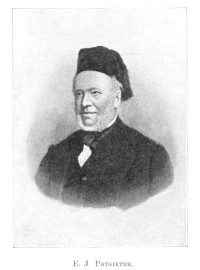 A great many events gave evidence of this revival. The commercial interests of The Netherlands had been hampered by conflicts with Belgian industry, and this obstacle being removed they most powerfully developed. Abroad natural science took at this time a new and high 12 flight. This stimulated to imitation and it was soon represented in a brilliant way by such men as F. Kaiser, Professor at Leiden 1837, G.J. Mulder, Professor at Utrecht in 1840, Donders, university lecturer at Utrecht in 1842, &c. 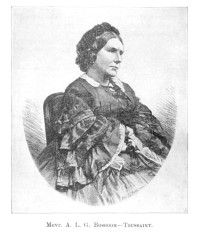 When in 1846 C.W. Opzoomer entered upon his professorship, he introduced a not in philosophy entirely different from that which had hitherto been sounded from the rostrum. After a short period wherein he interpreted Krause, he followed the track of Auguste Comte and Stuart Mill, and uplifted the banner of Empiricism. 13 Literature, too, enjoyed a period of revival and bloom as had not been surpassed since Vondel's day.  Bakhuizen van den Brink first established with A. Drost's assistance the review “De Muzen" (“The Muses") in 1834, after that with Potgieter “De Gids" (“The Guide") in 1837, and van Lennep, Oltmans, and Miss Toussaint brouht to light the first historical novels. Van Koetsveld, Beets, and Hasebroek wrote their first works, which at one bound attained classical heights, and were not surpassed by any of their later books; and Da Costa's lyre, which had been mute since 1822, began to sound again in 1840. In these years art also knew how to tear itself gradually 14 free from stiff classicalism and sentimental romanticizing, and found its way back to the sound realism that made it great in the Golden Age, and which would now once more bring it to a period of bloom and fame. John Bosboom, born in the Hague, in 1817, exhibited his works as early as 1833, and three years later set up his own studio. Still more powerfully did the awakened spirit manifest itself in the realm of religion and Church. In the first place there deserves mention here the personality of Wm. Bilderdijk (1756-1831). He was, even before the Revolution, an ardent Orangeman, who, refusing, in 1795, to take the oath of loyalty to the new Government, spent a number of years in exile. But on his return in 1806, his entire lifethought and poetry were one powerful protest against the Deism, Rationalism, and Pelagianism of his age. And this protest had the more influence because during his stay in Leyden (1817-1827) he drew, by his lectures on the history of the Fatherland, a crowd of disciples around him, who presently spread his ideas in constantly widening circles and taught them in various schools. To his disciples belonged Isaac da Costa, who, converted to Christianity by his teacher, was baptized at Leyden in 1822; Willem and Dirk van Hoogendorp, W.A. Schimmelpenninck van der Oye, Wassenaar van Catwyck, Groen van Prinsterer, and P.J. Elout van Soeterwoude, who all were to play a part in the religious and civil history of our country, and would not let an uncertain sound be heard. It began as early as 1823, when da Costa published his “Bezwaren tegen den Geest der Eeuw". (“Objections against the Spirit of the Age") and in it declared war against the whole of his age. This antithetic tendeney was strengthened and deepened by the religious awakening — known by the name of the Reveil — which had its origin in Scotland, was taken from there to Switzerland by Wilcox and Robert Haldane, and thence transplanted to The Netherlands through the writings and personal visits of men like César Malan, Bost, Merle d'Aubigné, A. Monod, Gaussen, &c. This Revival was neither a genuine national nor a real 15 “Reformed" movement. It only found favor among a few aristocratic circles in the Hague, Amsterdam, Rotterdam and Utrecht. But still it was of great significance for our people and formed a mighty factor in its history. First, it emphasized personal, really living piety. It did not primarily affect orthodoxy in religion; but heart faith, inner soul experience. Secondly, it united itself principally with the so-called unalterable doctrines of the Reformation. There were and constantly grew among its friends, all manner of confessional, Church and political differences. But they stood together on the same foundation of the divine authority of the Holy Bible, the divinity of Christ, the personality of the Holy Ghost, original sin, the atonement of Christ, justification by faith, the necessity of regeneration, and sanctification. Thirdly, it was moved to soul-compassion for all the lost and wretched ones around; and took up evangelistic and philanthropic work with youthful zeal through lectures, meetings, pamphlets, distribution of Christian literature, Sunday schools, charitable institutions, &c. But however much good the Revival contained, it was not ecclesiastical and had not much sympathy with the Church. In consequence a movement sprang up, side by side with it, to champion the truth and the freedom of the Church; and thus soon came into conflict with the government of the Netherlands Reformed Church. This government was instituted arbitrarily by Royal Decree of Jan. 7th, 1816; it was fundamentally unlawful and in essence antireformed. Art. 15 of the General Law for that government stipulated that the legislative power in the Church belonged to the King! And although according to art. 9 the various church rules were held responsible indeed for the maintenance of doctrine, yet this doctrine was not closely defined, and the formula of subscription for the preachers included that they were to testify to compliance with “the doctrine which, in agreement with God's Word, is implied in the accepted formulas of unity of the Netherlands Reformed Church.". The expression “in agreement with God's Word" was ambiguous. Some interpreted it to mean that the 16 doctrine bound the members of the Church because (quia) it agreed with God's Word, and others held that it bound in so far (quatenus) as it agreed with God's Word. This led to great contention. 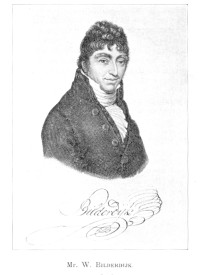 With this began a Church strife about either the liberty in teaching or the organization of the Church, which continues to the present day. Now and then secessions had already occurred in some communities. Bilderdijk had written even as early as 1818 that the conditions in the Church were such that secession was a necessity, and repeated this in a letter to da Costa in the year 1925. 17 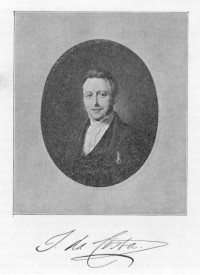 But one secession was of great importance. It started in a small congregation in Ulrum (Groningen) under the preaching of H. de Cock, and spread itself further and further through all the Provinces. These small seceding congregations suffered much reproach and insult because they refused unconditional obedience to the government of the Netherlands Reformed Church, as they wanted to live more conformably to the Reformed Confession and church order, and at the same time did not want to give up the name and rights of the Reformed Churches. They also endured official persecution — fines, billeting, imprisonment — because the Constitution of 1815 in art. 191 offered protection only to already 18 existing religious bodies, and because art. 291-294 of the Criminal Law forbade gatherings of more than 20 persons. Nevertheless, the seceding congregations increased in numbers and gradually, by a sort of compromise, were recognized by the Government, erected a Theological Seminary at Kampen in 1854 and in 1869 assumed the name of “Christian Reformed Church." Peace, however, did not return to the Netherlands Reformed Church (the late so-called State Church). On the contrary it remained and constantly became more and more the scene of strife. In matters of Theology, too, a new era dawned after 1830. The moderate supernaturalism, which held undisputed sway in Church and University during the first quarter of the century, neared its end and made room on the one hand for orthodoxy, and the other for the Groningen and “Modern" school. The Groningen Theology was so named after the city and province where several professors and preachers — Hofstede de Groot, van Oordt, Pareau, van Herwerden, Amshof, &c. — organized a society in Oct., 1835, and in 1839 began to publish a theological magazine for cultured Christians, entitled “Truth in Charity". This theology was the result of the philosophical ideas of Ph.W. van Heusde (1778-1839), who became Professor in Ütrecht in 1804. Many of the above-named Groningen theologians had been his pupils, and had accepted the idea already advanced by Lessing, that history is to be considered as a revelation of God by which He trains humanity into conformity with Himself. Revelation and Education thus became identical. God educates by revelation and He reveals by education. This revelation and education has humanity as its object. It proceeds by nature., history and conscience; by persons and facts more than by doctrine; by all great men who in the course of time have arisen among the nations; by Socrates and Plato, called the forerunners of Christianity; and then in the highest degree by Jesus Christ, pre-eminently the divine man; and after Him by His Church, which bore the 19 impress in turn of James, Peter and Paul and is now passing more and more into the Johannine period. 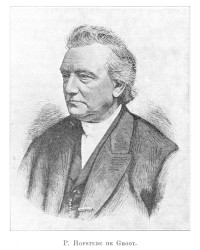 With these new thoughts Groningen Theology conquered the old, worn-out supernaturalism, but soon became subject itself to sharp criticism, first, from the side of the orthodox and after that not less fiercely from the side of “Modern" Theology. It hereby perceptibly lost ground, but continues to exist to the present day, under the new name of Evangelicals (named after the Electoral Society established in Groningen in 1867) and has an organ in “Geloof en 20 Vrijheid" (Faith and Liberty) published for the first time in that same year. Orthodoxy was by no means in unison, but moved from the very beginning of its appearance in various directions. One part found its way into the Seceded Churches; the other and far the greater part remained in the Netherlands Reformed Church, but there exhibited a manifold appearance. Even among the friends of the Revival there existed such a great variety of sentiments on many subjects of minor importance that it led to a formal split, first at their Convention at Amsterdam on the 25th Oct., 1854, and still more decidedly at a conference of the Society for Christian National Education in Utrecht on May 19-20, 1862. Three schools especially appeared. First, there were many, especially among the people who, feeling themselves attracted by Groen van Prinsterer, the scholarly student of Netherlands history and learned jurist, took their ground on the Christian historical principle, and urged that the Christian, Reformed character of the Church and also of the nation and schools, the State and its institutions should be maintained. They repeatedly submitted proposals to Synods, and the address of the so-called “seven gentlemen of the Hague" (Groen van Prinsterer among others) in 1842 created an especial great stir. But all these overtures were shelved or answered unsatisfactorily. In the course of time it became more and more evident that the Netherlands Reformed Church practically favored unlimited freedom in teaching, and opened its pulpits to the most divergent schools. Others, even those of the orthodox wing, held that maintenance of the Confession by enforcing, the law was not the right manner to reform the Church; that real reformation could be effected only by moral means along so-called healing lines. This irenical position, especially vindicated in a magazine called “Ernst en Vrede" (Earnestness and Peace) (1853-1859), was taken by the most prominent representative of this school, D. Chantepie de la Saussaye (1818-1874), in harmony with his confessed ethical principle, viz.: 21 that the truth of Christianity as to its religious-moral nature could not be demonstrated scientifically but recognized only along lines of regeneration and conversion through heart and conscience. 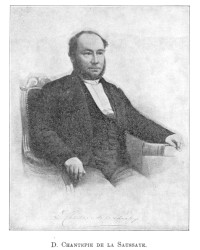 But this principle was again questioned by the Utrecht school of Van Oosterzee, Professor at Utrecht 1863-1882, and Doedes, Professor there from 1859-1888 († 1897), who took their stand on the facts of Christianity, considering these, after unprejudiced research, as raised above reasonable doubt; and therefore came forward as apologists of 22 Apostolical and Historical Christianity, in opposition to the Groningen School but especially to the “Modern" theology. 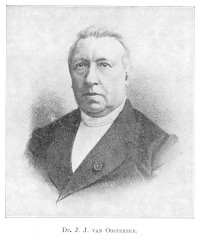 This last-mentioned theology owed its origin to C.W. Opzoomer (1821-1890), who had studied law at Leiden, under Thorbecke, but as early as 1846, at the age of 25, was appointed professor of Philosophy at Utrecht. His change from the idealism of Krause, which for a short time he defended, to the empiricism of Auguste Comte and Stuart Mill marked an important turning-point in the history of Netherlands science and philosophy. For by recommending the empirical 23 method for mental science he fundamentally and radically parted ways with every tradition in this matter, and impressed on theology especially the stamp which characterized it as “modern" from its first appearance to the present day, viz.: its anti-supernaturalism. Yet Opzoomer endeavored to uphold mental science in its right and worth, by assuming in man the existence not only of experience and feeling through the senses, but also of a separate religious, ethical and aesthetic feeling. It was difficult to reconcile this with his empirical starting-point, but in that way he thought he could unite 24 the acknowledgement of the full right of science and its inviolable foundation, the unbreakable law of causation, with the belief in a personal God, moral freedom and immortality. 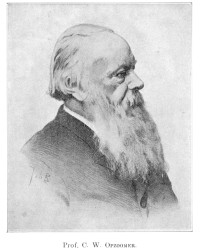 This reconciliatory tendency, which kept him as far apart from materialism as from orthodoxy, brought him a large number of followers. For years he exercised a powerful influence upon young Netherlanders through his captivating delivery, his clear style and his lucid reasoning methods. Students of all faculties sat at his feet and drank in his wisdom. The strongest proof of Opzoomer's influence is that he 25 contributed not only to a very great extent to the moulding of the mind of “Modern" theologians (more particularly of A. Pierson), but converted Scholten himself to empiricism. He (Scholten) lived in the home of his uncle Van Heusde during his undergraduate days in Utrecht and even then felt a two-fold difficulty arising within him as regards the supernaturalism of his teachers Heringa, Bouman and Royaards, viz. the insufficiency of historical apologetic evidence as basis for religious faith, and the lack of philosophic depth. He therefore sought another standpoint, and under the strong impression made upon him by Schweizer's “Glaubenslehre" (1844-47) he took his ground, first upon history and the church creed, and, secondly, hoped to be able to argue from that point along lines more in agreement with Hegel's than, like Schweizer's, with Schleiermacher's philosophy. Thus for many years he was and remained a conservative and supernaturalist, but by his own speculation he was ever driven further away from the Reformed Confession to the Reformed principles (particularly the doctrine of God's sovereignty), from the historical facts to religious ideas, and at last, in 1864, threw all supernaturalism overboard, proclaiming his system to all the world as pure spiritualistic monism. His principal book, “The Doctrine of the Reformed Church," ran through four editions between 1848 and 1862, but had then as dogmatism lived its day. 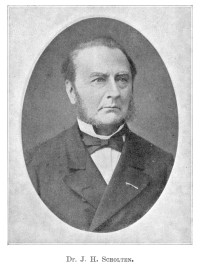 With this strife of minds in Church and Theology was combined that in the State. Unlike other countries, political and religious conflicts have been very closely connected in The Netherlands since 1830. This may be explained chiefly as resulting from two causes: First from the fact that the principles of freedom in religion and separation of Church and State, although expressed in the Constitution, were never fully applied, while liberty of education had not even been acknowledged and permitted for a long time. In the second place and chiefly, from the fact that, analogous to the Reformation of the 16th century, the Revolution, in its own way, tore the nation asunder into two parts, by 26 opposing to each other two antagonistic views of the world and life. For it was, from the very first, resisted and opposed by Bilderdijk and his colleagues and, among his pupils, especially by Groen van Prinsterer. The latter had already indeed learned from his master to question the truth of Revolutionary ideas, but at first was conservative-liberal, or liberal-conservative, in the spirit of Guizot. 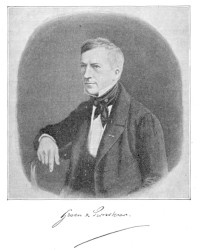 He came to a clear consciousness of the principles which were to be his guides through life, first when he came in contact with Merle d'Aubigné at Brussels and became acquainted with the works of de Bonald, von Haller and others, and devoted himself to the study of history. He lifted the banner of the Christian-historical, or Anti-revolutionary 27 principles on high alongside of and in opposition to conservatism and liberalism, as well as to reactionary and contra-revolutionary policy. According to his own statement his Christian-historical education was completed in 1831, at 30 years of age, and the outlines of his principles were formulated. These principles amounted to this: that the Netherlands nation in the 19th century should maintain its Christian Protestant character in every branch of its Legislation and Government, in all its publie institutions, especially in Church and School; fully accepting the spirit of the new age, but rejecting the principles of the Revolution not in a reactionary but in a historical sense, not narrow-mindedly, but in a broad an d generous spirit. These principles came into conflict not only with the prevalent liberal-conservatism, but also with the young liberal party which came into existence after 1830 under the leadership of J.R. Thorbecke, born in 1798, three years before Groen van Prinsterer, and who became Professor in Leiden in 1830. Both men were and remained close friends, appreciated each other, and at the beginning their principles seemed to agree tolerably well. But their difference manifested itself in the letters of Thorbecke of the years 1830-1832, publisbed by Groen van Prinsterer. Thorbecke was a practical statesman who did not consider the people's sovereignty much of an evil if but incorporated into a system of laws and a working organism in all its divisions (Letters p. 42), and held that a practical politics was not to be deduced from Christian, particularly not from Protestant principles, but should be perceived in and evolved from the State itself with its own laws, also ordained by God (see p. 64-65). Their first direct and personal conflict arose in 1837, in consequence of the action taken by the Government against the Seceders, which Groen condemned in a pamphlet, and Thorbecke vindicated in the “Journal de la Haye". From that time until their death, which came to Thorbecke in 1872, and to Groen in 1876, they were in and out of Parliament divided by fundamental principles, although not by personal antagonism. 28 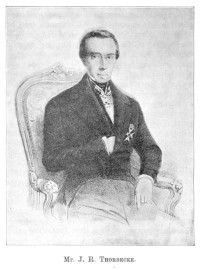 In the Church Groen became in 1842 leader of the Confessionals and in the State of the Christian-historical or antirevolutionary party which was born when in 1840 Groen obtained a seat in the Second Chamber of the States-General 3. And Thorbecke became the father and leader of the liberal party, which under his influence broke away from 29 conservatism, and from the very first urged radical revision of the Constitution, civic and individual liberty, limited monarchical authority, independence of provincial and municipal government, ministerial responsibility and direct election of members of the Second Chamber by the people. Thorbecke was the spiritual father of the revision of the Constitution which took place in October, 1848, under pressure of the February revolution in France, although he was not a member of the preparatory Committee appointed in March. One year later he was intrusted by King William III with the formation of a Cabinet that took office on the first of November, for the special purpose of enacting the organic laws demanded by the revised Constitution, among which the franchise, provincial and municipal Acts occupied a first place. II. The establishment of a liberal State in The Netherlands dates from 1848. There is no doubt that civic and individual liberty took an important step forward in the forties. An end came to the persecution of dissenters when William I abdicated in 1840, and was succeeded by William II. In 1842 the King declared himself incompetent to regulate Church affairs, and a year later transferred the supreme power in the Church to the Synod. In that same year a Royal Decree of Jan. 2nd provided that if anyone was refused permission by a Municipal Council to start an elementary school, he had right of appeal to “Gedeputeerde Staten" 4, and in clause 194 of the Constitution of 1848 this principle was expressed: “Teaching is free". This freedom might have enjoyed more justice in practise if Thorbecke had remained a member of the Cabinet; for in letters of Dec. 2nd, 1849, he had invited the various authorities to observe the greatest liberality possible when considering requests for the establishment of free schools. But he was 30 compelled to resign in 1853 in consequence of the “April movement", which was the result of the restoration of the Episcopal hierarchy in The Netherlands, and it was due only to the Roman Catholic district of Maastricht that he had a seat in the Second Chamber at all. He became again head of a Cabinet, first in 1862 to 1866, and after that for a short time from Jan., 1871, to July, 1872. Freedom of religion and education remained, in fact, limited in every way. Using the power which the King had in 1842 restored to the Church, the Synod in 1852 issued a new rule comprising many excellent amendments, and granting more authority to the congregations, so that the organisation of the whole evolved to a greater extent out of these. But the organisation of 1816 was practically retained. It is true that in 1842 the Government made the organization independent of itself, but it did not rescind the organization itself, and the Church remained under the yoke. Moreover, the financial bond between State and Church remained intact, and the Theological Faculty as training school for future pastors of the Netherlands Reformed Church was retained by the University Education Act of 1876, although internally changed. This led to continual conflicts between the various parties in and outside the Netherlands Reformed Church, and confirmed the friends of that creed more and more in their conviction that no advantage could be expected from the Synodical Organization and that this itself must be attacked and destroyed, to be replaced by the old Reformed Church-government. Hence the cry became the emancipation of the Church. And this cry received the greater influence as it was sounded by such a talented and powerful man as Dr. A. Kuyper, who was born in Maassluis in 1837, became preacher at Utrecht in 1867, and in 1870 at Amsterdam, and after he had exchanged the Church career for the political, still exercised a great influence upon the people as an elder in the Church at Amsterdam and editor of a theological church paper. The emancipation of the Church which he took as his mission appeared the more possible since in 1866 the Synod had left to the congregations the right to appoint their own 31 pastors, to elect their own elders and preachers, and to control church property. If, therefore, the Synod was ignored and the congregations influenced, there was a chance for the Church to regain its independence and to organize its confessional and ecclesiastical affairs according to its own choice. 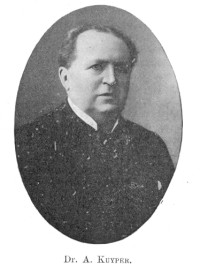 A Free University on Reformed principles, and whose Theological Faculty was to educate ministers for the Reformed Congregations, was founded, therefore, in 1880 by a private association. In 1885 a conflict broke out in the Consistory of Amsterdam. It was censured and suspended, and on Dec. 16, 1886, resolved in the name of the congregation to cast off the Synodical yoke, restore the Church government of the Synod of Dordt, not to claim any right to buildings and property 32 for the present, and to be known henceforward as “Doleerende Kerk" 5. About 20,000 members of the Church went out with this Consistory. Other churches followed, entered into a temporary union, and in 1892 united with the afore-mentioned Christian Reformed Church, under the new name of “Reformed Churches of The Netherlands" 6. The Netherlands Reformed Church suffered great losses in consequence, but soon recuperated and remained the battle-ground of various parties. Confessionals, ethicals, evangelicals, “moderns" — each in turn having many varieties — have carried on the strife over creed and organization up to the present day. The fight for the school was also continued after the Constitution of 1848, and assumed a much more acrimonious tone. For although the Constitution stipulated in clause 194 liberty in teaching, the same article directs that public education is the object of the Government's continuous care, that the teaching must be such as to respect everyone's religious opinions (must be practically neutral) and that everywhere throughout the country adequate education should be provided by the authorities. The last clause was inserted in the Constitution of 1848 on the insistence of the conservative party, against the wish of the State Commission and of the Prime Minister, Thorbecke, and gave special offence to the friends of free Christian schools: it was “a miserable clause" that offended freedom of conscience, was in conflict with separation of Church and State, and limited the free development of individual powers. In due course the Cabinet of van der Brugghen passed the Education Act of 1857, and although of kindred spirit the Ministry deeply disappointed the anti-revolutionaries, since, while they were allowed to establish private schools, it nevertheless made the neutrality of public education 33 prominent and upheld the, to them, untrue assertion that this could lead up to all social and Christian virtues. A strong, concerted action followed throughout the country, and the Christian School continually secured more sympathy and power. The various schools of thought in orthodox Protestantism worked quite unanimously together in this struggle for free education. Groen van Prinsterer, constantly advocating general Protestant Christian Confession, endeavoured to unite Reformed and Seceders, Lutherans and Baptists, Confessionals and Ethicals in this Struggle for the School on the basis of the “unchangeable truths which during the period of the Reformation had in this country also revealed with blissfull splendor their vitality in Church and school". But this did not do away with the fact that Groen often stood alone and in Parliament was deserted even by his own sympathizers. Not for naught was he called “a General without an army". For in those days the Conservative party was still great and powerful. The difference between the principles of the Reformation and those of the Revolution were not yet clearly understood. Not unfrequently obliteration of boundary lines and mixing of colors took place. This was manifested in 1857 in the Van der Brugghen Education Act, in 1866 in the Keuchenius resolution and in 1869 at the conference of the Society for Christian National Education. Groen, tired of this lack of principle, made therefore a radical change at the general election of 1871; as leader of the Anti-Revolutionary party, he nominated only three candidates in the whole country: Keuchenius, Kuyper and Otterloo, and thus eliminated the conservative elements from it. This was a temporary loss, but in the long run a gain. The Anti-Revolutionary party recovered its independence and became capable of organization. Groen made a beginning, establishing election societies everywhere under the name of “Netherlands and Orange". But these societies had no mutual bond and common program. A change came through Dr. Kuyper, who immediately at the beginning of 34 his political career took the organization in hand. On April 1st, 1872, he started editing a daily: “De Standaard" (The Standard), made the election societies co-operate in a Central Committee, and drew up a program of principles which he fully elaborated and interpreted, and which was in 1878 adopted by the entire party as its program. The growth of the Anti-Revolutionary party dates from that time. It gained in votes and members of Parliament at nearly every election. But this progress cannot be explained by its own growth in strength alone, but was to a large extent due to the aid of the Roman Catholics, who had gradually assumed a different political attitude. Before 1853 they usually sided with the Liberals. During the union with Belgium they had joined them in opposing the coercion policy of the Government, and in the first half of the century they thought that their interests were best served in this country by the Liberal party. Together with the Radicals and Jews they insisted on the exclusion of the Bible from the public schools according to the Act of 1806, and on complete neutrality in education. By appealing to liberal tenets they succesfully claimed liberties, granted in principle by the Constitution of 1798, and obtained a subsidy for their Church in the first half of the 19th century, abrogation of the “placet" (see clause 170 of the Constitution of 1848); emancipation of monasteries, the right of forming associations and holding publie meetings, etc. Thus they became more self-conscious. Their principal organ “De Tijd" (The Time) published seventy-two statistical lists between Feb. 1 and Oct. 31st., 1848, showing how unfairly the Roman Catholics had been treated in The Netherlands, and had been disregarded in all influential, remunerative appointments. In June, 1848, they started a movement for a general petition insisting upon direct elections, freedom of religion and a proper liberty of education. To the Catholics a manifesto was issued expressing the wish for the restoration of the episcopal hierarchy. 35 This restoration, which took place by a papal decree of March 4th, 1853, awakened among Protestants a storm of indignation still feebly echoed by “De Protestant", organ of the then established Evangelical Society, and cost the Thorbecke Ministry its life. After that time, however, the bond between the Liberals and the Roman Catholics steadily became looser. Their differing views concerning the revolution in Italy and the opposition of the Encyclical of 1864 to the Liberal culture brought to light the far-reaching differences between them not only religiously but also politically. The school interests drove the Catholics more and more to the side of the Anti-Revolutionaries. Although they were formerly well satisfied with the neutral teaching in the public Schools, especially in the South of the country, where they were in the majority and the schools practically Roman Catholic, yet there grew up amongst them a different, more fundamental tendency to consider religious education of the children an absolute necessity. The tendency was greatly strengthened by the mandate of the Bishops of July 23rd, 1868, rejecting not only all irreligious but also non-religious or neutral teaching. While in this matter the “right" wing parties increased their strength in the nation and the States-General, the Liberal party rapidly lost ground. It had passed through a period of prosperity, as did the “modern" school in the Church, and had brought about much good. But even the Thorbecke Ministry of 1862-1866 did not live up to expectation; it gave rise to difference of views and also to personal quarrels. And matters did not improve at Thorbecke's retirement. In matters of great importance such as Government, suffrage, system of taxes, education, etc., it became more and more evident that a younger faction, represented by men like Fransen van de Putte, van Houten, Kappeyne van de Coppello, etc., were breaking away from the old Liberals and desired to champion a progressive reform. After Thorbecke's death in 1872 the last-named endeavoured to 36 assume the leadership and to unite the divided party. In a remarkable address en the National Budget in 1875 he introduced a complete program of reform, and called the people's interests the supreme aim of the State, including more particularly education, which the State has no right to leave to others, but must take under its own care. As Prime Minister from 1877 to 1879 he set himself to bring about these reforms, especially by amending the Education Act, and thereby secure the triumph of the Liberal principles as held by him. But the right kind of sympathy and necessary confidence from most of his followers was denied him. Many Liberals, disappointed in their expectations, particularly with regard to the neutral public school, were inclined to give concessions to the private schools. Although the new Education Bill was passed, it resulted in the very opposite to what it had in view. For this law, represented to the people by Dr. Kuyper as the “Sharp Resolution" and the “Decretum Horribile", made competition impossible for the free schools deprived of all subsidy, in consequetiee of its onesidedness and excessive favouritism of the public school. But this gave champions of the fermer a streng weapon with which to fight the other. An impressive petition signed by hundreds of thousands (300,000 Protestants and 200,000 Roman Catholics), wherein the King was requested to veto the Bill, did not prevent its being placed en the Statute Book, yet the petition constituted a powerful testimony to the spirit that was aroused in the nation in favour of religious schools. Catholics and Orthodox Protestants worked hand in hand. The Catholic Professor, Dr. H.J.M. Schaepman (1844-1903), who made his first appearance in Parliament in his clerical garb, knew how to overcome the partiality of his fellow-believers for the Liberals and their prejudice against the Protestants, particularly the Calvinists. Supported by Jonkheer A.F. de Savornin Lohman and Dr. Kuyper on the Protestant side, he brought about the so-called “Monster Union", viz.. the coalition of the “right" wing parties. The election of 1888 resulted in their favour, and for the 37 first time a “right" wing Cabinet — the Cabinet of Mackay (1888-1891) — came into power. Under this Cabinet the Elementary Education Act was passed, by which private schools received grants under definite conditions. 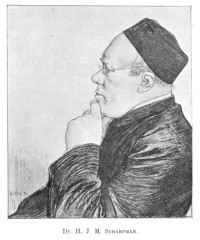 These grants were considerably increased by the Prime Minister, Mr. Borgesius, in connection with the introduction of the Compulsory Education Act, and again subsequently when Dr. Kuyper (1901-1905), and when Mr. Heemskerk (1908-1913) was in office, so that public and private schools 38 are now supported by the State to approximately the same extent. 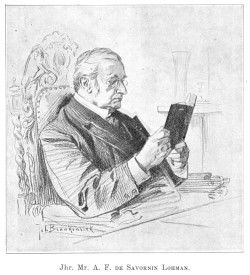 The subsidy made it possible for the free schools to spread themselves rapidly throughout the whole land. In 1912 elementary instruction was given in 920 Roman Catholic schools by 5,277 teachers and to 184,907 children, and on Jan., 1st, 1914 there were 1,116 schools with Bible instruction, in which 177,058 children were taught by 4,147 teachers. Events having made it so very clear that a goodly 39 number of the people were set upon having religious instruction given to their children, a desire for an armistice on the school question arose, and Mr. Cort van der Linden met this desire in December, 1913, by appointing a committee with instructions to seek for peace on the school question, and, if possible, to prepare resolutions to that end, on the basis of equality in financial support. III. This longing for an end to the school fight is one of the many signs of the new times wherein, since 1880, we have lived, and which had been prepared for in various ways. There was, in the first place, the great change that came over what was expected from science. The extraordinary inventions and conquests which fell to the lot of natural science in the 19th century, appeared to warrant the hope that it had once for all solved all the mysteries of the world and of life, and would be the panacea for all ills. Materialism was the philosophy of the age, and the mechanical explanation of the world was for many immoveably established. But this period passed away. The prosecution of research caused people to see that mysteries, both in the world and in man, did not vanish, but grew in numbers and in nature. There appeared to be more and more enigmas of which science could not give an explanation. Thus it increasingly learned its limitations, became conscious of its narrowness, and saw itself surrounded on all sides by an unknown territory, and because of this it returned from the philosophy of Hegel and Spencer to that of Kant. Even as early as 1864, the cry in Germany was: Back to Kant, and soon found an echo here. For the intellectual monism of Scholten awakened strong opposition in the cireles of the “Moderns". De Genestet († 1861) permitted faith and science to remain side by side, rather than that “the rooster of genius should wring the neck of the rooster in the breast", and was of opinion that “the life of mystery laughs pitifully at each system." Busken Huet and Pierson resigned their profession as preachers, and in this were 40 followed by many others. Prof. Hoekstra, Professor at the Baptist Seminary in 1856, and from 1877-1892 also in the Theological Faculty of the University of the city of Amsterdam († 1898), championed in 1858, as against Scholten, a moderate free-will, and further sought the foundation for religious faith not with Scholten in reason, nor with Opzoomer in an inborn religious feeling, but rather more in Neo-kantian style, in man's faith in the truth of his own being, “in the postulates of his spiritual and moral nature". After 1870 “Modern" theology divided itself also into intellectualists, who remained loyal to Scholten, and ethicals who joined Hoekstra and through him Kant. The ethicals received not a little support when Rauwenhoff (b. 1828; Professor in Leiden 1889) took leave of the monism of Scholten in 1887 in his “Philosophy of Religion," subsequently defending the dualistic standpoint and religious faith; i.e., he really did not rest his belief in the moral worldorder upon any other ground than the categorical imperative of conscience. Just as in theology a change was made manifest from intellectualism and empiricism to ethical idealism, so did an alteration in philosophy take place in this country. The Leiden Professor. J.P.N. Land (1834-1897) took a critical standpoint, as philosopher, and cherished a life-long respect for the Kantian philosophy. Prof. van der Wyck, who in 1863 began a professorship in Groningen, first trod in the footsteps of his teacher Opzoomer, but let his empiricism give way more and more to criticism. It was particularly the Amsterdam Professor C.B. Spruyt († 1903) who in his mental philosophy took his stand close to Kant and Schopenhauer, and made upon his pupils a deep impression of the limits of human knowledge. Not less great was the change that appeared in the sphere of art. Architecture had fallen into entire decline but came to new life again, especially through P.J.H. Cuypers (b. 1827 at Roermond). In conformity to the needs of the new age, architecture impressed its mark not only upon churches and parsonages, but also upon Government 41 buildings, Universities, Museums, Board of Trade buildings, stations, bridges, &c. 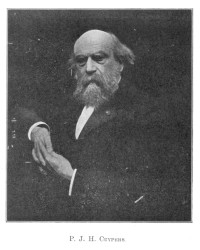 The art of painting created for itself a certain independence in the first half of the century, but came to prosperity only when, in the second half, the spirit of the people mightily revived. Agriculture, commerce and industry took a high flight. The sciences, particularly history of the Fatherland and of old Dutch art, were honored. And it was noticeable, although readily explainable, that the new art of painting moved in the same realistic and democratic path as its predecessor in the 17th century, with this one difference however: The art of painting of the Golden Age was happy 42 and cheerful; it rejoiced in the glory of the simple peasant life. But that which now arrived was characterized, because of the spirit of the times, by a deep rooted melancholy; it gives evidence of the profound feeling that lives in the heart of the artist for the tragic in human life (especially Joseph Israels 1824-1911). 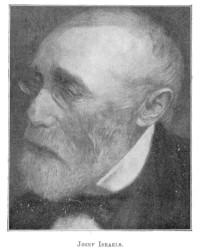 This line was soon followed by Literature, which moreover profited by the lessons of the New Philosophy. This, indeed, taught that reality does not exist objectively as we see it, but that it is created by man's mind, and thus Art does 43 not exist in studying and objectively reproducing reality, but in expressing in his own language what the artist lives through and experiences in his own soul as he sees reality (impressionism). Naturalism, it was said, did not stray into wanting to become realistic, beeause both naturalism and symbolism are diametrically opposed to the old rhetorici with their conventional words and pictures. But naturalism was faulty in its conception of the reality that the artist must reproduce and express. For that is not the true reality which can only be measured, weighed, and counted, and is the object of scientific research, but the true reality is Life, Will, the Unconscious that lies behind the appearance of things, is related to man's deepest being, and can be understood and enjoyed only through emotion. Art must be the “individualistie expression of individualistic emotion", it must be practiced for its own sake, l'art pour l'art (art for art's sake). It was under this banner that the new tendency in Literature appeared in the year 1885 with its own organ “De Nieuwe Gids" (The New Guide) edited by Fr. van Eeden, Frank van der Goes, W. Kloos, W. Paap, and A. Verwey, and with the co-operation of Fr. Netscher, L. van Deyssel (Karel Alberdingk Thym), Jacob van Looy, A. Aletrino, &c. But as early as 1890 it became evident that this young generation included many conflicting elements. In a few years it separated into various schools. There were some who exalted individualism, remained loyal to the watchword art for art's sake, asserted that they wrote only because they must, and did not concern themselves a particle with the effect of their words upon society; they would write as they did even if they were alone upon earth; and they derived satisfaction in, e.g., devoting pages to the description of a table (van Deyssel and Kloos). Under the influenee of Scandinavian, Russian and especially French novels, this led with others to a pessimistic and fatalistic naturalism (Couperus, Emants, Joh. de Meester, Coenen, van Hulzen, &c.) that depressed their readers and weakened their courage and strength. But this passion for reality led again to a close observance 44 of conditions and relations among the different circles of society, among the aristocratic and the common people. The sadness among the laboring classes, too, awakened pity and social sympathy (Heyermans, Groeningen, Brusse, and Querido). 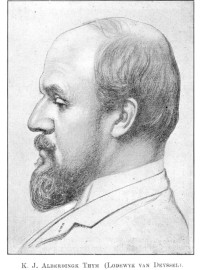 And thus did this naturalistic school again extend a hand to that other group in the generation of '80 which could not unite with Individualism, but desired to open heart 45 and mind to the ideals of the new era, and wished to bring art into contact with modern society. There is in this group also a difference between those who joined the political socialism (van der Goes, Gorter, and H. Roland Holst) and those who expected happiness for society only through the use of moral and economic means (van Eeden) or by entering into closer and broader relations to the world-life and seeking a style befitting the times (A. Verwey). Furthermore — as a sign of the new age — the rise of the social movement especially attracts attention. Preparation for this had been made in this country by the society called “De Dageraad" (“The Dawn") already organized in Amsterdam in 1856, which had as object the furtherance of free thought, and still numbers 1,200 members in 716 branches; further by the writings of Multatuli (Eduard Douwes Dekker) 1820-1887, who in 1860 published Max Havelaar and from that moment exercised an extraordinary influence upon the youth of the Netherlands through his biting irony and sharp criticism, of which Christianity and Church, bourgeoisie and liberalism were favorite subjects; and later also by certain sections of the “Internationale" that had been organized since 1869 at Amsterdam and other places, and had as object the enfranchisement of the laboring classes. But this social movement first became of public significance only when some members of the Liberal party, such as Van Houten, Kerdyk, and Pekelharing, among others, began to be zealous for social legislation, and when in 1871 the General Netherlands Labor Union, with B.H. Heldt († 1914) as chairman, was organized as a reaction against the Internationalists. This Union soon came into conflict with a socialistic group who originated in the Union of Ironworkers called “Volharding" (“Perseverance"), organized in 1873 at Amsterdam, and who wanted to push the Union forward in the direction of the socialistie program adopted at Gotha. When this did not succeed, they formed themselves into a Social-Demoeratic Union, which was the first of the kind in 46 the Netherlands but was soon imitated by others, and in 1881 was united with these into a general organization. 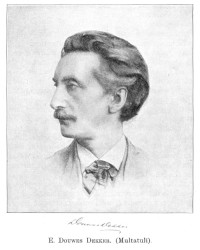 This Social Democratie movement received great support from Ferdinand Domela Nieuwenhuis (b. 1846) who for a number of years was a Lutheran preacher, but laid aside this profession in 1879, and then devoted all his strength and time to preaching the Gospel of Socialism. He made great progress on account of his impressive appearance, sympathetic voice, religiously-tinted speeches, and also through his publication: “Recht voor Allen" (“Justice for All") established by him on April 1st, 1879. 47 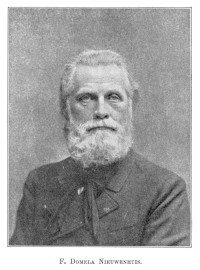 As early as 1887 he was elected a member of the Second Chamber by the Schoterland district. But when he met with much disappointment in his political career, and was not reelected in 1891, he renounced all Parliamentary affairs. His co-partner, Van der Goes, came forward at a meeting of the Union in December 1891, and on his appearance the conflict opened between the Parliamentary and the Revolutionary Socialists. These latter continued to exist, retaining “Recht voor Allen" as their organ, and Domela Nieuwenhuis as leader. But they lost him in 1897, when he went over to 48 Anarchism and organized the party of Free Socialists. The Parliamentary Socialists on the other hand united with the Social Democratic Labor Party at Zwolle on the 26th of Aug., 1894, under the leader ship of the so-called twelve Apostles (Mr. P.J. Troelstra, b. 1860, and others), and from the very beginning devoted themselves to forming organizations and to political action. In 1897 they took part for the first time in the election of members to the Second Chamber, secured at once fully 13,000 votes, and saw three of their candidates elected. This young party proved at every recurrent election to have gained in votes. At the last election in 1913 they obtained nearly 144,000 votes foy their candidates, and sent eighteen members to Parliament (later this was reduced by two). 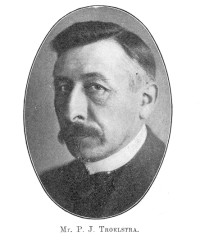 However, the significance of the Social Movement does not lie exclusively or even principally in the wonderful 49 growth of Social Democracy, but it lies in the extraordinary development of society itself, of which we are witnesses a the present time, and of which Social Democracy is one of the many manifestations. Society, spiritually and materially, is subject to such a change from day to day that through the rapid progress of the sciences (history, e.g., of races, culture, languages, religions, morals, &c.) all security appears to be vanishing, and no one knows whither we are drifting. This socialism does not, therefore, affect one class, that of laborers, but all classes, those of farmers, the industries, merchants, teachers and clerks, and men, women, and children in all circles of society. It concerns not one party only, but all parties and tendencies. For a long time, in the last century, people were able to cherish the hope that “liberty" was the magic word to unlock the door of happiness, and that society left to itself would save itself and bring everything into order. But when they began to observe and study that society itself the illusion was soon disturbed. Culture had its advantages, but it also had its drawbacks. Crimes did not decrease; prisons were not emptied; the victims of alcohol and prostitution could be numbered by thousands and hundreds of thousands; selfishness and violence, mammonism and excesses triumphed over justice and mercy. Everywhere, therefore, praises gave way to Jeremiads; and laisser faire had to make way for social politics. In this country social legislation began in 1877 with the abolition of the law prohibiting the ascociation of laborers. It proceeded with the adoption of the Child Labor law of 1874; Labor laws in 1895; Chamber-of-Labor law in 1897; Compulsory Education law in 1900; the Accident law in 1901; Labor Contract law of 1907; the Stone-cutter law of 1910; and it hopes soon to take up the formulation of a sick, invalid, and old-age law. It goes without saying that this remarkable change in State affairs is by no means hailed with delight by everybody. There are constantly in every political party increasing 50 conservative and progressive elements who can unite as long as fundamental subjects are touched, but who easily come into conflict when it concerns radical modifications of policy. And such a modification manifests itself whenever Constitutional Amendment and suffrage extension, the military question, and social legislation come under consideration. Even from the time of the second Thorbecke-ministry there was friction between the Progressives and the Antiprogressives in the Liberal Party. This friction developed into collision and conflict occasioned by the suffrage extension Bill proposed by Mr. Tak van Poortvliet in 1894, and led ultimately to a schism into three groups: the conservative old or Free Liberals, the progressive Union Liberals, and the Radical Democrats. Various Christian-historical groups separated themselves from the Anti-revolutionaries to join the “right" wing, in consequence of the varying opinions concerning the Free University of 1880, the “Doleantie" of 1887, the co-operation with Rome, the democratic tendency, and the suffrage extension in 1894, and for the most part united with the Christian-historical party under the leadership of Jonkheer A.F. de Savornin Lohman, with the Nederlander (“The Netherlander") as organ. And it lost those who went over to the “left" wing because for them the democracy of Dr. Kuyper did not go far enough, and who therefore separately organized (Christian Democratie Party of Staalman 1905, Union of Christian Socialists 1907, Christian Social Party of 1913). Great differences existed in the Catholic party also for years after the coming of Dr. Schaepman, among those who followed this leader on his democratic path, and others who gathered around Mr. Bahlman, deputy for Tilburg, to hold in honor the old traditions of the days of co-operations, with the Liberals, and little esteemed the new reforms in union with the Calvinists. Although these groups came together again on the basis of a program formed by Dr. Schaepman in May, 1897, and in a general Society of all Roman Catholic voters under leadership of a General Union organized in 1904; yet the old opposition continued to 51 exist, and comes to light now and then on the military question, the election, the income and property-tax, the insurance laws, &c. Even the Socialists have not been able to maintain peace among themselves, but became divided on the question of Marxism or Revisionism. Although all efforts possible were made to arrive at a modus vivendi, and these to some extent succeeded, yet a little group separated themselves in 1909 from the Social Democratie Labor Party (S.D.A.P.) under the leadership of Wynkoop, with the organ “The Tribune", and stepped forth independently under the name of “The Social Democratic Party" (S.D.P.) The social efforts of the parties do not, however, confine themselves to politics, but appear more clearly in society itself. Here we meet with the Labor Unions: the General Netherlands Labor Union, founded in 1871 under the chairmanship of B.H. Heldt; “Patrimonium", Society of Christian Workrnen, organized in 1876 by K. Kater; Christian National Labor Union, under the leadership of Dr. J.Th. de Visser; Roman Catholic People's Union, organized in 1888 by W.C. Passtoors; further, the Protestant, the Roman Catholic, and Mixed or Neutral People's organizations, which are continually growing; and furthermore social bureaux, Lecture Courses and Congresses which are being organized on all sides. Thus there has existed in Amsterdam since 1899 a Central Bureau for Social Advice. A Social Congress was held in the Capital in 1891 by the Christian Protestants, which it is hoped will ere long be followed by another one. In 1903 a Catholic Social Action was set in motion by Romanists, who busily organized societies of this kind already existing and placed them under the control of a Central Bureau established at Leiden. And to this must be added all beneficent and charitable efforts wherein the various schools compete with one another, and that afford excellent evidence of the sympathy which the more favored members of society have with those less blessed. It is out of the question here to give a full account of this labor. Just as in former centuries the work of charity 52 flourished, so it has revived in the Reveil after a time of decline in the Rationalistic and Revolutionary period, both among Catholics and Protestants. There is scarcely a domain left where Charity has not planted its feet. Societies of all kind exist, and for all needs; institutions are arising over the entire country to nurse and care for the feeble and defective. Society is constantly taking upon itself heavier responsibilities for all destitutes, from their birth to their death and burial. Yet it is more or less clearly realized that all this beneficence and charity is inadequate to remedy the evil because society itself trembles on its foundations, and has above all things need of principles and forms whereby it can live, develop and be guided. What is lacking in the present generation in all its wealth of civilization and culture is firmness of conviction and certainty of faith. Unquestionably there here lies a fine and holy mission for the Churches; for they form in the Netherlands an often denied but nevertheless a quite respectable and blessed power. At the last, the 9th, census, on Dec. 318st 1909, the Church statistics were as follows:
Churches have this advantage over other societies, that they are rooted in a long past, take children from their birth, and develop religious convictions that are the deepest and most tenacious of all. And there is reason for joy that the Churches have recently had a deeper appreciation of their mission and have undertaken Evangelization, Home Missions, philanthropic work of all kind with energy. They are alive, and in the 19th century have come to new prosperity and influence. This is evident outwardly in the number of Church buildings that were erected not only by the Catholics, but also in particular by the Reformed who seceded from the Netherlands Reformed Church (so-called State Church) in the second half of the previous century, and further in all the Mission Chapels and Charity institutions that give evidence of a powerful religious life. As against this it must be said that the great divisions in the Christian, particularly in the Protestant Churches sadly weaken the power of their witness, lessen their influence upon heart and conscience, and are harmed more than benefitted by an occasional attempt at unity. Even the Catholics have steadily declined in numbers during the last 60 years. In 1849 they constituted 38.15, and in 1909 only 35.02 % of the population, that is to say, a decrease of 3.13 %, and this decline concerns not only numbers but also inner strength. Even the Catholic Church, at least in some places, as well as the Protestant, has occasion to complain of decline in faith, neglect of the sacraments, mixed marriages, &c. The last census brought the significant fact to light that the number of those who declared themselves as belonging to no Church were not less than 4.97 % of the population. In 1879 there were only about 12,253 non-church members. In 1909, however, there were 290,960, an increase in 30 years of fully from 0.31 to 4.97 %, i.e., more than 1,500 %. It is not improbable that these churchless people are to an important extent found among the Jews, who from the beginning manifested much sympathy for “Modernism". That the official community life among them after all retained a decided orthodox character and thus prevented all 54 serious divisions can without doubt be ascribed to the excellent organization of both Church denominations (namely, the Netherlands and Portuguese Israelites), who in 1870 received a separate organization, and also to the influenee of the Rabbis, but particularly to the organizing labor of Dr. J.H. Dunner, from 1863 Rector in the Netherlands Israelitish Seminary, and from 1875 also Superior Rabbi of North Holland, till his death in 1911. 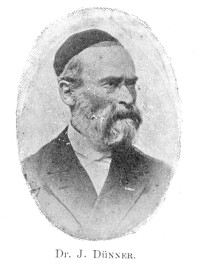 In order to make all local work more fruitful for the religious and moral uplift, both of individual and family life of the Jews, by unity and co-operation, a “Central Organization" was established by Mr. Rudelsheim, Superior Rabbi of Friesland. As regards Zionism, which found but moderate favor in this country, it does not in reality nurse religious ideals in its purely national endeavors. But the possibility that a revival of the Jewish consciousness may some day pave the way for a resumption of the religious ideas which, in fact, constitute the soul of Judaism, cannot be entirely denied. A person cannot in the long run live without heart faith. If the religion of one's youth is lost, in one way or another 55 compensation is sought. The Netherlands as well as other countries, gives strong evidence of this. Views of World and Life flourish luxuriously, and substitutes of religion and philosophy increase daily. There are particularly three directions in which the many searchers after the unpromised yet greatly-longed-for land move: 1. In the first place, there are some who have taken upon themselves as their life-mission to work for society. When, for example, at the close of the last century the socialistic movement grew and brought to light all manner of bad conditions and sadness, many young people, especially students, were impressed, and put this question to themselves: What can we do in life for the people and their needs? and they determined to strive in word and deed for social righteousness, to soften class differences and work together for the betterment of society. In Friesland, where Socialism found a fruitful soil, a group of preachers came forward who organized themselves under the banner of De Blijde Wereld (“The Joyful World") and in 1902 joined the Social Democratic Party. But others considered these means for improvement of society unsatisfactory, since they did not affect the root of the disease and left selfishness in the heart of man untouched; and they, therefore, argued that, following the example of Tolstoi a simple and pure life was to be brought into practice by each individual, and that such a pure life included vegetarianism, total abstinence from alcoholic liquor and tobacco; also anti-militarism, anti-vivisection, and protection of animals. Since 1897 they have propagated these ideas through the semi-monthly publication De Vrede (“Peace",) under the editorship of Felix Ortt. lt was but one step farther to an effort to leave the old, corrupted society, and establish a new community in a small colony. Such an effort was attempted in 1898 at Blaricum, and, under the influence of Thoreau's Life in the Woods, particularly at Walden, near Bussum, by Dr. Frederik van Eeden, (born in 1860) who, after being disappointed in this, 56 went to America in order to there propagate his reform ideas. All these comparatively sm all groups were characterized by this, that they did not consider reform of society possible without the deepening of religious and ethical life. 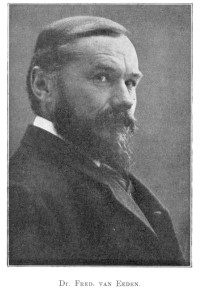 These reformers, just as the above-mentioned Christian Socialists, also seek a union of Socialism and Religion; and thereby they meet a newly-awakened necessity in modern life, for in every direction, since the intellectualism of the previous period, there is to be observed a revival of religion and mysticism. 57 We find evidences of this in Literature, among others in Van Eeden, Kloos, and Verwey. In art impressionism was pushed aside by expressionism, that concerns itself but little with reproducing reality, but desires to create a new art produced out of the mind. (Thys Maris, b. 1835; Vincent van Gogh, b. 1861; Toorop, b. 1860). 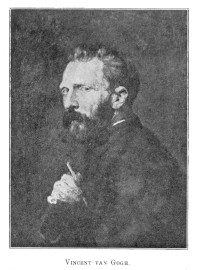 A correspondence to this was found in science in an effort to understand and explain everything psychologically. In the realm of politics, too, a new Religious Democratie Party, under the leadership of Prof. Kohnstamm, gives evidence of this feeling of a need for religion, in that, whilst it 58 sets itself in strong opposition to the Coalition polities of the “right" wing party, it nevertheless recognizes and establishes a union between religion and politics. 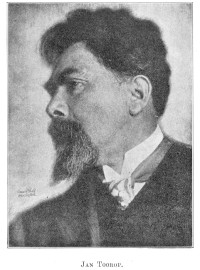 Even Socialism served for years as a sort of religion for its adherents. Marx and his followers thought that they could dispense with religion — that opium of the people — since Socialism would satisfy man in body and soul. But now that this salvation tarries and is less phantastically conceived of, the former scorn of religion is giving 59 place among many Socialists in Germany and also in this country to a higher appreciation of it. There was a Socialist Union organized in the spring of 1912 that had as its object to combat and defend the good in religion, and which in the autumn instituted religious socialistic meetings at Amsterdam which were largely attended and were repeated during the past winter. There is a desire among many for a social Christianity, in whose interest a Congress was to be held in September of last year at Zurich, which, however, could not take place on account of the war. 2. Another path is taken by those who seek compensation for Christianity in Occult Science, in Spiritualism, Christian Science, or Theosophy, and in many instances often in sorcery, magic, astrology, and all sorts of other forms of superstition. Since 1876 Spiritualism has been disseminated by Mrs. Elise van Calcar (1822-1904) in her periodical: “On the Borders of Two Worlds", and by the Dutch Reformed preacher D.P.M. Huet (1827-1895) in his publication “Eternal Life", which was devoted to Christian Spiritualism, and ceased to exist in 1887. Since that time this Christian Spiritualism has found extensive cultivation, and is at the present day recommended as a refutation of materialism, as evidence of a spirit world, and as support of faith in immortality, eternal reward and the existence of God. Of no less infiiience is Christian Science, which is strongly monistic, knows only one life and life-principle, and denies the reality of sin, sickness and death, which according to it exist only in imagination, that is, in error of consciousness. By far the greatest progress is made by Theosophy, that here as elsewhere partly follows Mrs. Tingley, and partly Mw. Besant, but which in both schools strives after a one, all-comprehensive science. While science in the former period limited itself to a knowledge of experienced phenomena, or considered all reality as included in this, Theosophy believes that there is 60 not only a visible and “diesseitige", but also an invisible and “jenseitige" world, and that these can be comprehended in one system. Accepting what Science in the West had brought to light concerning the material world, particularly concerning its eternal evolution, it unites therewith the knowledge which, as related to the spirit world, was evolved in the Orient, and was transmitted by the wise men of India and revealed to Mrs. Blavatsky, or can also be obtained through one's own experience. Thus does Theosophy, as well as Gnosticism bear a syncretistic character, and assigns to each people, each religion, and each philosophy a place in the world process, and carries evolution also through the eternal spirit world. 3. Finally, there are also some who seek rest in one or another philosophic system, and from it derive a world and life view. Their number has greatly increased during recent years. In a number of places philosophical societies have been organized. Since 1907 there has appeared a bimonthly publicatïon on Philosophy. Lectures and courses in philosophy meet with great interest. Although Spinozism and Neo-Kantianism also still have representatives, the former especially in Dr. W. Meyer, the soul of the society called “Spinoza House", who had turned Spinoza's Home in Rynsburg into a museum, and further in K.O. Meinsma, Dr. J.D. Bierens de Haan and others; the latter in Prof. Kohnstamm, Prof. Ovink, Mr. J.A. Levy, Dr. L. Polak, &c., yet the main stream of philosophic life flows in a different direction, in that of the psychical monism of Prof. Heymans, Professor at Groningen since 1890, or in that of the Hegelianism of Prof. Bolland, who succeeded Prof. Land at Leiden in 1896. A great difference exists between these two philosophers. Heymans is a warm champion of experimental methods, of psychophysical measures, statistical facts, and close research. Over against this Bolland's object is to make Hegel's philosophy understandable to the consciousness of this age, and thus to have reason again recognized all over the world as the true reality. The former proceeds from the multi, the 61 other frorn the unum. Heymans is above all an Empirical Psychologist who wants to found his philosophy upon close observation, and, in agreement with his teacher Land, leaves room for a general religious belief, but not for religion as a cultus. 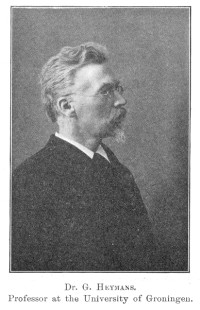 Bolland is in reality at heart a theologian who includes religion and Christianity in his philosophical thought, and, like Hegel, endeavors to acknowledge and appreciate them as symbolical representations of exalted ideas. But there is after all in the metaphysics of both more than one point of agreement, because Heymans thinks the psychical alone real, considers all psychical individuals as 62 the contents of a highest, all-comprehensive consciousness and Bolland sees in the entire world and all that appears therein a realization of eternal thoughts which in reason are one, through opposing interchangeable processes. 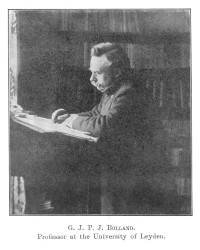 Both, therefore, cherish a glad hope for the future, even though it be on different grounds. When psychology, according to Heymans' idea, shall have become real science, and shall have made known to us the laws of psychical life, it will at last bring about peace with ourselves, with our fellow-men, and with the world, and fulfil the hope that in the end all will be well; and Bolland expects that the kingdom 63 of mind will pave a way along the line of natural and spiritual life. According to both there is developing in man and in the whole world a great psychical organism, a Kingdom of truth, of liberty and of love. And thus in the chaos of expectations that is observable today on all sides, including the Netherlands, a twofold unity is after all to be seen, viz: a unity of belief that this dark world, after all is said and done, originated in thought and idea, and a unity of hope that light will finally come forth out of darkness. And this inspires man to live on froin age to age. 1 “Child-grants" refer to an arrangement by which the sum of 25 florins is annually given to parents, for the support of every child born into the family of a clergyman during his incumbency. 2 These Churches, whose origin is dealt with on page 32 of this pamphlet, use the word Church for each local community and Churches for their federation throughout; the nation, in accordance with the use of the word ecclesia in the New Testament. 3 In the Netherlands the popularly elected or Lower House is called the Second Chamber, the First Chamber being the equivalent of the Upper House in other countries. 4 A managing Committee chosen by the members of the Provincial States from among themselves. 5 “Doleerende" is derived from the latin “dolere" — to suffer — and indicates that the Churches are in a “suffering" condition because they are deprived of their rights. 6 See note page 8. |
|||||||||||||||||||||||||||||||||||||||||||||||||||||||||||||||||||||||||||||||||||||
Please send all questions and comments to Dmytro (Dima) Bintsarovskyi:
dbintsarovskyi@tukampen.nl